Related Research Articles
Electoral systems of the Australian states and territories are broadly similar to the electoral system used in federal elections in Australia.
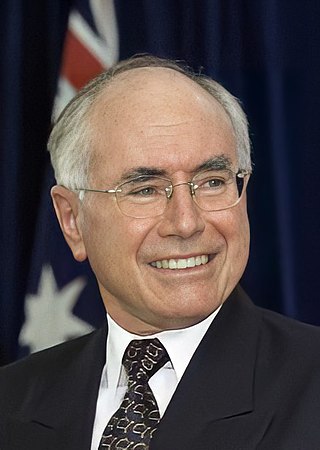
The 2001 Australian federal election was held in Australia on 10 November 2001. All 150 seats in the House of Representatives and 40 seats in the 76-member Senate were up for election. The incumbent Liberal Party of Australia led by Prime Minister of Australia John Howard and coalition partner the National Party of Australia led by John Anderson defeated the opposition Australian Labor Party led by Kim Beazley. Future Opposition Leader Peter Dutton entered parliament at this election. As of 2023 this was the most recent federal election to have a rematch in 11 years, and the most recent repeated election when Howard beat Beazley just 3 years earlier and until 2013 to have both major party leaders running in previous federal elections as major party leaders when in 2013, and the last for both major party leaders to appear in consecutive federal elections in 24 years.

Electorates of the Australian House of Representatives are single member electoral districts for the lower house of the Parliament of the Commonwealth. There are currently 151 electorates.
In Australia, one vote, one value is a democratic principle, applied in electoral laws governing redistributions of electoral divisions of the House of Representatives. The principle calls for all electoral divisions to have the same number of enrolled voters, within a specified percentage of variance. The electoral laws of the federal House of Representatives, and of the state and territory parliaments, follow the principle, with a few exceptions. The principle does not apply to the Senate because, under the Australian constitution, each state is entitled to the same number of senators, irrespective of the population of the state.
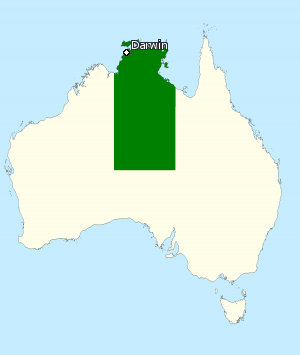
The Division of Lingiari is an Australian electoral division in the Northern Territory that covers the entirety of the territory outside of the Division of Solomon, which covers Darwin and surrounding areas. The division also includes the territories of Christmas Island and the Cocos (Keeling) Islands.
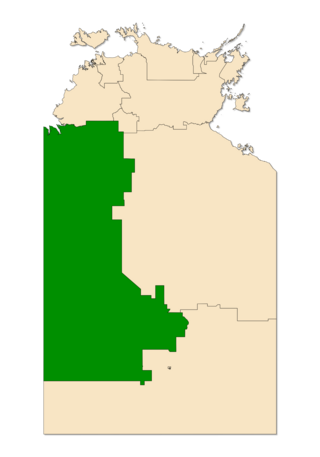
Stuart was an electoral division of the Legislative Assembly in Australia's Northern Territory.

Blain is an electoral division of the Legislative Assembly in Australia's Northern Territory. It was first created in 1997 and is named after Adair Blain, the second member for the federal Northern Territory electorate, and the only Australian sitting federal MP to ever become a prisoner of war. Blain is an urban electorate, covering 4 km² and taking in Palmerston suburbs of Bellamack and Woodroffe, and most of the suburb of Rosebery and a small section of the suburb of Moulden. There were 5,695 people enrolled within the electorate as of August 2020.
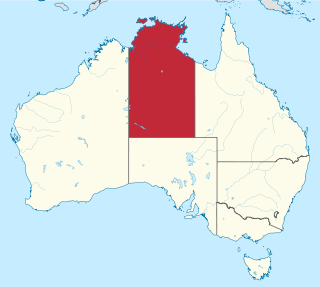
The Division of Northern Territory was an Australian Electoral Division in the Northern Territory for the Parliament of Australia. Throughout its existence, it was the only Division in the Northern Territory. At the redistribution of 21 December 2000, the Division was divided into two new divisions, which were named the Division of Solomon, which covered the area immediately around Darwin, and the Division of Lingiari, which covered the remainder of the territory.

The Division of Solomon is an Australian Electoral Division in the Northern Territory. It is largely coextensive with the Darwin/Palmerston metropolitan area. The only other division in the territory, the Division of Lingiari, covers the remainder of the territory.

The Division of Pearce is an Australian electoral division in the state of Western Australia. It was created at the 1989 redistribution and named after George Pearce, the longest serving member of the Australian Senate, serving from 1901 to 1938. For most of its existence, Pearce was a hybrid urban-rural seat that covered Perth's outer northern suburbs before fanning inland from the Indian Ocean to take in portions of the Wheatbelt southeast, east and northeast of the capital. However, as of the 2021 redistribution, Pearce is largely coterminous with the City of Wanneroo in Perth's northern suburbs. It has had four members: Fred Chaney, Judi Moylan, Christian Porter, and Tracey Roberts. The first three were members of the Liberal Party, whereas Roberts, a former mayor of Wanneroo, is a member of the Labor Party.

The Northern Territory Greens are a green party in the Northern Territory, a member of the federation of the Australian Greens party. It is the only branch of the Australian Greens to have never had any parliamentary representation, as well as the only one that does not run candidates in every single seat. The party is the most progressive registered party in the Northern Territory.
In Australia, a redistribution is the process of redrawing the boundaries of electoral divisions for the House of Representatives arising from changes in population and changes in the number of representatives. There is no redistribution for the Senate as each State constitutes a division, though with multiple members. The Australian Electoral Commission (AEC), an independent statutory authority, oversees the apportionment and redistribution process for federal divisions, taking into account a number of factors. Politicians, political parties and the public may make submissions to the AEC on proposed new boundaries, but any interference with their deliberations is considered a serious offence.

Dunedin North is a former New Zealand parliamentary electorate, which returned one Member of Parliament (MP) to the New Zealand House of Representatives. It was established for the 1905 election and has existed since. It was last held by David Clark of the New Zealand Labour Party, who replaced the long-standing representative Pete Hodgson. It was considered a safe Labour seat, with Labour holding the seat for all but one term (1975–1978) since 1928. In the 2020 electoral boundary review, Otago Peninsula was added to the area to address a population quota shortfall; with this change the electorate was succeeded by the Dunedin electorate in the 2020 election.

Rodney was a New Zealand parliamentary electorate, returning one Member of Parliament to the House of Representatives. The last MP for Rodney was Mark Mitchell of the National Party. He held this position from 2011 until the electorate was replaced with Whangaparāoa in 2020. Mitchell stood for and won that seat.
The Electoral district of Northern Territory was an electoral district of the South Australian House of Assembly from 1890 to 1911. The electorate encompassed all of what is the Northern Territory when the Territory was included as part of South Australia for political purposes.
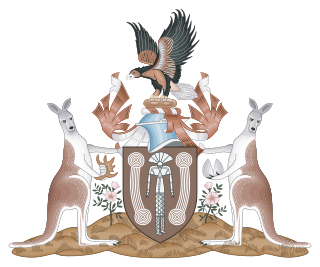
The Northern Territory Legislative Council was the partly elected governing body of the Northern Territory of Australia from 1947 until its replacement by the fully elected Northern Territory Legislative Assembly in 1974.
Elsey was an electoral division of the Northern Territory Legislative Assembly in Australia. One of the original divisions, it was first contested in 1974 and was abolished in 1987. It was named after Elsey National Park. It was largely replaced by the new and considerably smaller electorate of Katherine, as population growth in the town of Katherine had resulted in the removal of much of the rural area of the electorate in the 1986 electoral redistribution.
Ludmilla was an electoral division of the Legislative Assembly in Australia's Northern Territory. One of the Legislative Assembly's original electorates, it was first contested at the 1974 election and was abolished in 1990. It was named after the Darwin suburb of Ludmilla.
This is a list of electoral results for the Electoral division of Fannie Bay in Northern Territory elections.
This is a list of electoral results for the Electoral division of Port Darwin in Northern Territory elections.
References
- ↑ 2019 Enrolment Statistics, Northern Territory Electoral Commission, July 2019.
- ↑ Green, Antony. 2005 election summary. ABC News, 2005-04-15.